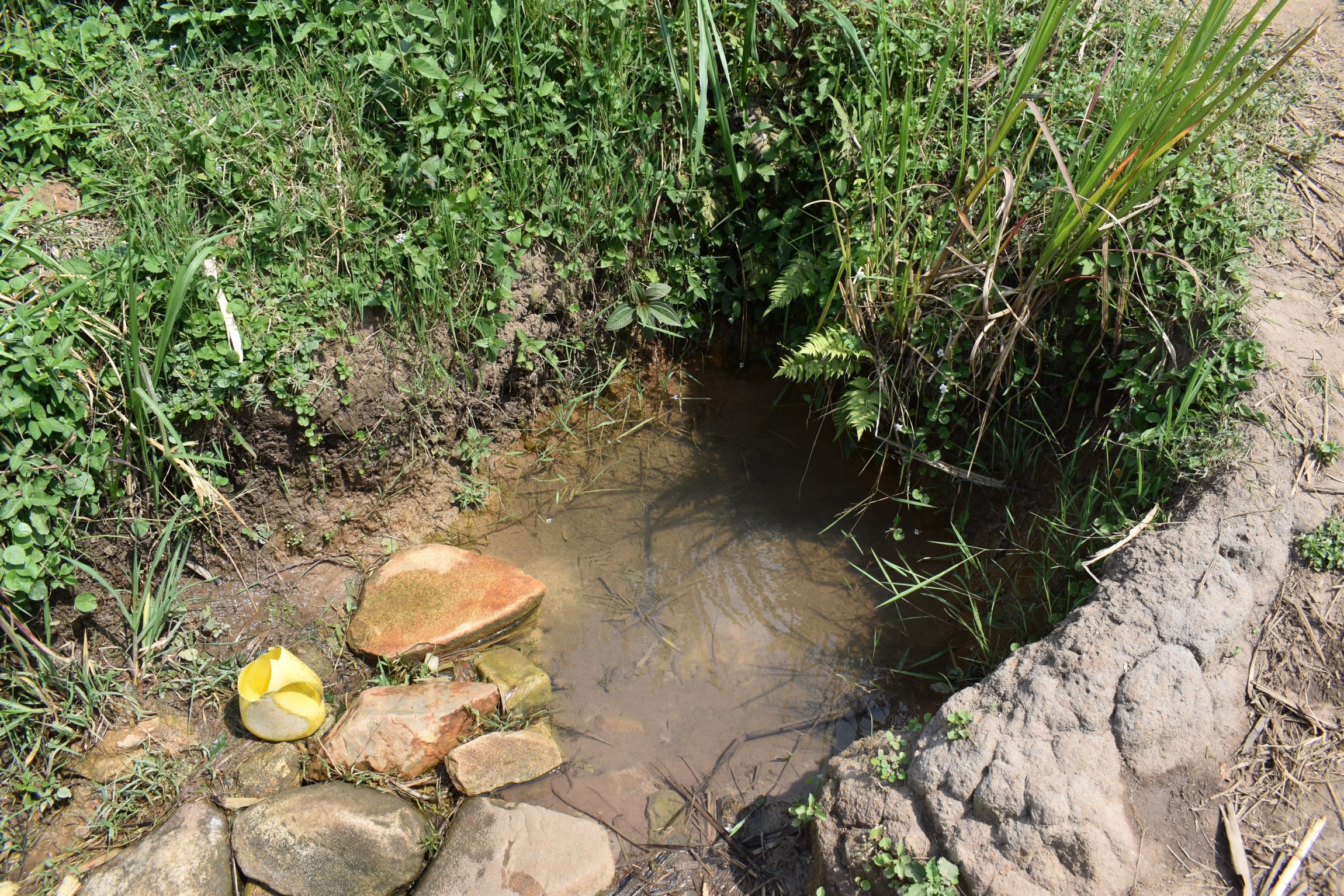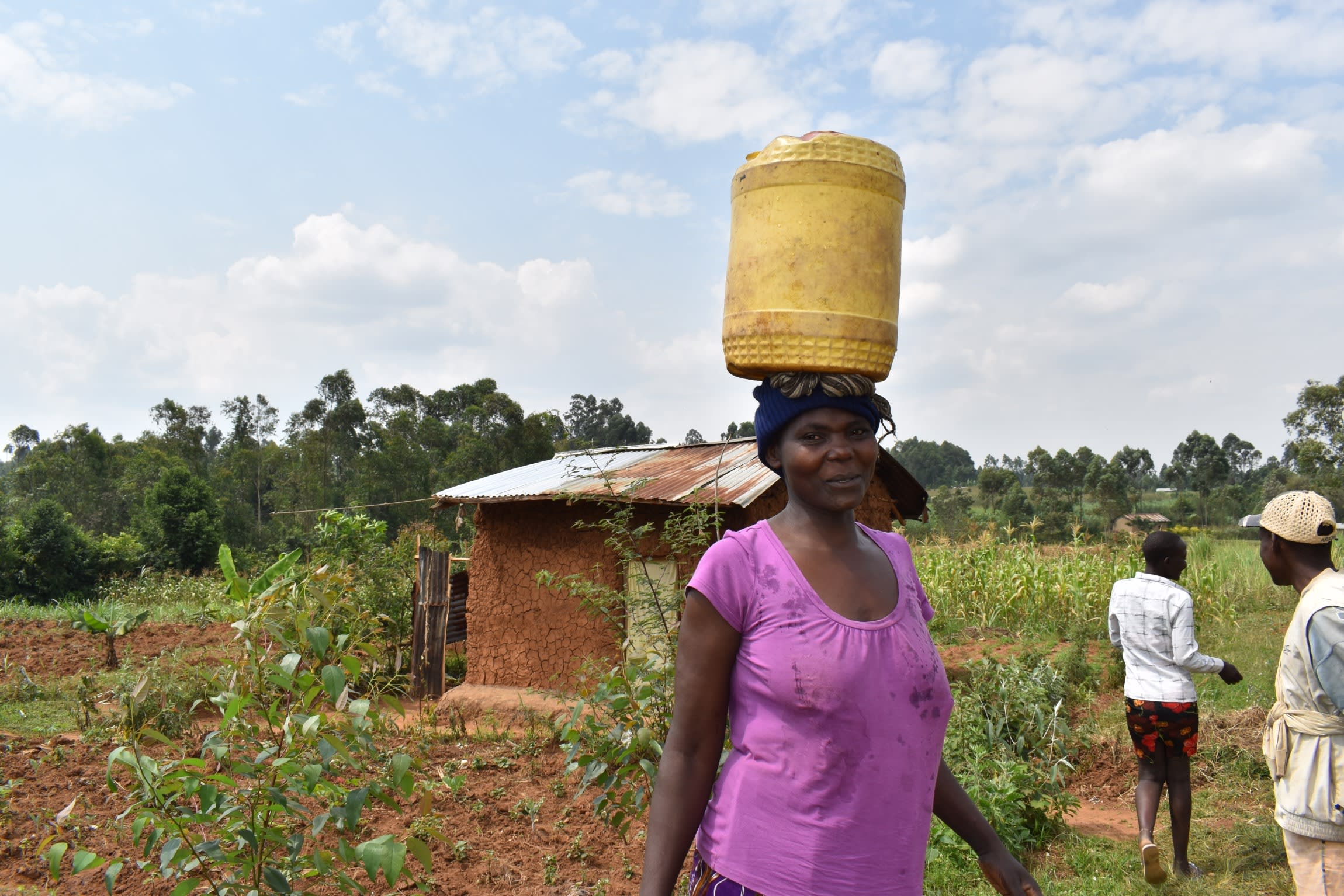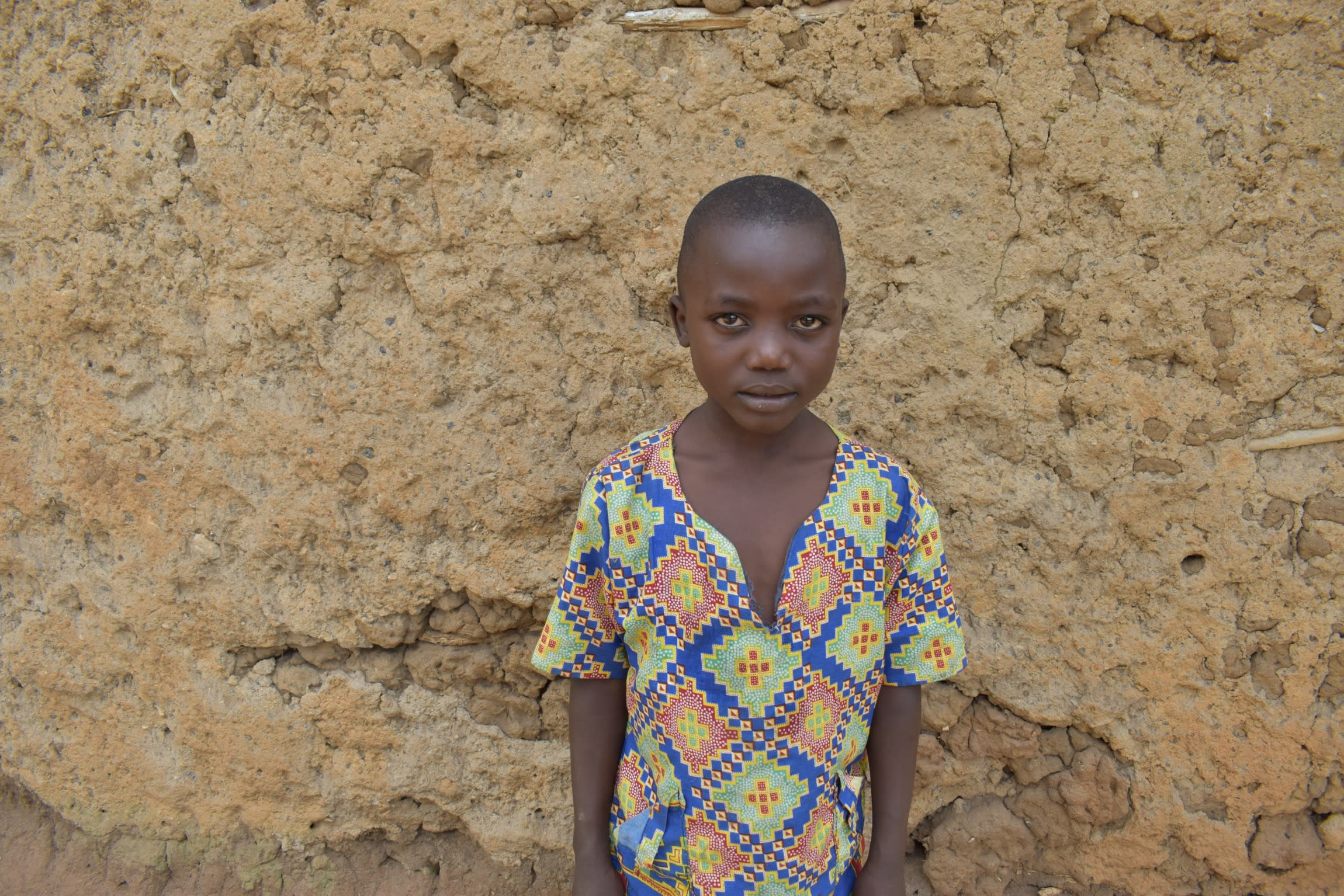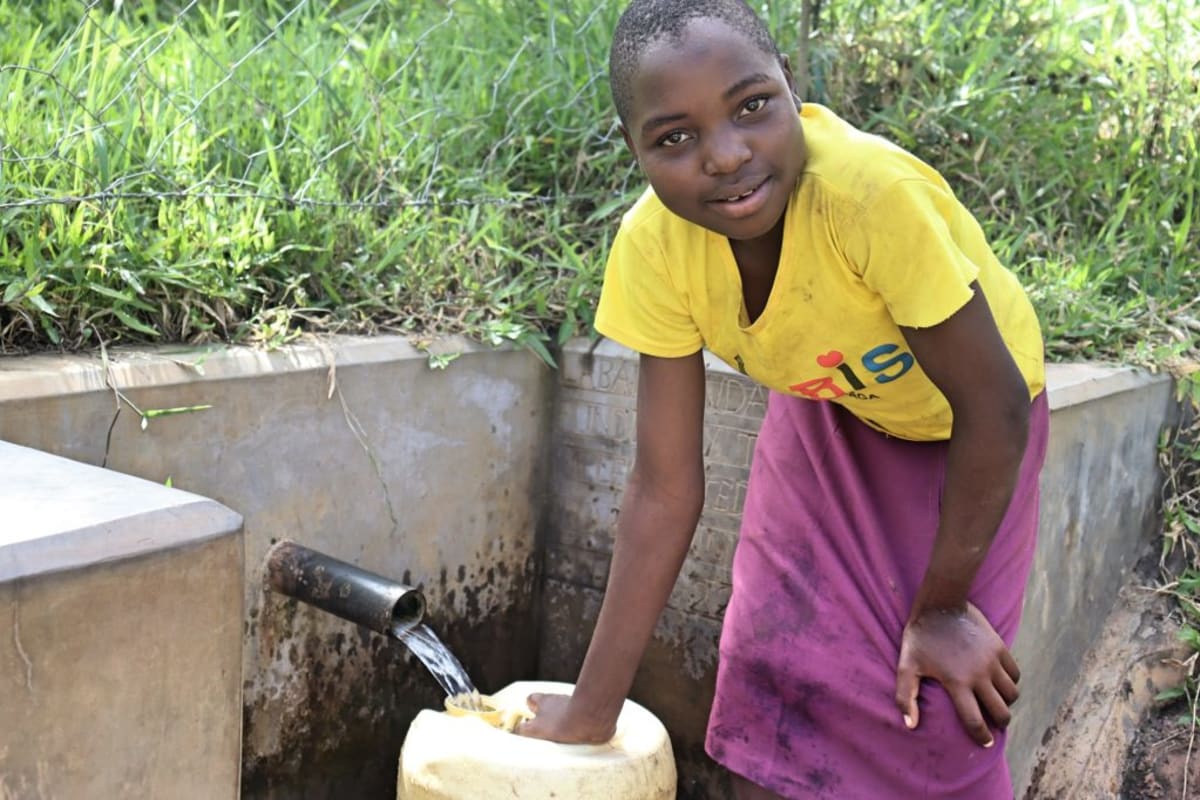There aren't enough water sources in Emulama to serve all 210 community members' needs. This is why, no matter what time of day you venture to Laban Andati Spring, you will always find a line of people waiting to fetch water here.

The difficulty of collecting water doesn't help matters. People must balance on some of the rocks placed in the spring to access it, often getting themselves wet in the process. They take small scooping jugs and bring up water one scoop at a time, trying hard not to stir up the sediment at the bottom of the water. All this time and effort, and still Emulama's people are suffering from diarrhea, amoeba, and typhoid.
The difficult task of getting water, coupled with impatient people waiting for their turn to fetch water, often spark quarrels among the community members, adding to the whole stressful situation.
Excessive round-trip and queuing times indicate an inadequate number of waterpoints or inadequate yields at water sources. This can lead to reduced individual water consumption and increased consumption from unprotected surface sources, and result in less time for tasks such as education or income-generating activities. Queuing time also affects the risk of violence at the tap stand. - Sphere Standards
To avoid all this, 34-year-old Consolata (carrying water on her head in the below photo) tries to get to the spring as early as she can.

"I have to be up very early in the morning, sometimes as early as four a.m., so as to go to the spring before it's crowded by people and the water gets dirty," Consolata said. "This in itself is such a cumbersome situation, but I have no other option. I have to do it on a daily basis."
And, unfortunately, even the children of Emulama aren't excused from water worry.
"In the evening after school, I am the one to go help my mother fetch the water to be used around the house," said nine-year-old Jotham A. (in the below photo).

"This means I cannot engage in playing with other children because by the time I finish fetching the water, it is usually very late. This is because of the trips I have to make to the spring and the long queue there. That means I have to wait for longer in order to get the water."
Increased collection time has also been shown to negatively affect the educational success of students, who report being late to school, lack of morale and ability to focus, and fatigue due to their water collection responsibilities. - Policy Futures in Education Journal
An easily accessible protected spring with a water-gushing discharge pipe will significantly reduce the amount of time Emulama's people spend getting water, freeing up their minds and schedules for other, more productive (or playful!) tasks.
What We Can Do:
Spring Protection
Protecting the spring will help provide access to cleaner and safer water and reduce the time people have to spend to fetch it. Construction will keep surface runoff and other contaminants out of the water. With the community’s high involvement in the process, there should be a good sense of responsibility and ownership for the new clean water source.
Fetching water is a task predominantly carried out by women and young girls. Protecting the spring and offering training and support will, therefore, help empower the female members of the community by freeing up more of their time and energy to engage and invest in income-generating activities and their education.
Training on Health, Hygiene, COVID-19, and More
To hold trainings during the pandemic, we work closely with both community leaders and the local government to approve small groups to attend training. We ask community leaders to invite a select yet representative group of people to attend training who will then act as ambassadors to the rest of the community to share what they learn. We also communicate our expectations of physical distancing and wearing masks for all who choose to attend.
The training will focus on improved hygiene, health, and sanitation habits in this community. We will also have a dedicated session on COVID-19 symptoms, transmission routes, and prevention best practices.
With the community’s input, we will identify key leverage points where they can alter their practices at the personal, household, and community levels to affect change. This training will help to ensure participants have the knowledge they need about healthy practices and their importance to make the most of their water point as soon as water is flowing.
Our team of facilitators will use a variety of methods to train community members. Some of these methods include participatory hygiene and sanitation transformation, asset-based community development, group discussions, handouts, and demonstrations at the spring.
One of the most important issues we plan to cover is the handling, storage, and treatment of water. Having a clean water source will be extremely helpful, but it is useless if water gets contaminated by the time it is consumed. We and the community strongly believe that all of these components will work together to improve living standards here, which will help to unlock the potential for these community members to live better, healthier lives.
We will then conduct a small series of follow-up trainings before transitioning to our regularly scheduled support visits throughout the year.
Training will result in the formation of a water user committee, elected by their peers, that will oversee the operations and maintenance of the spring. The committee will enforce proper behavior around the spring and delegate tasks that will help preserve the site, such as building a fence and digging proper drainage channels. The fence will keep out destructive animals and unwanted waste, and the drainage will keep the area’s mosquito population at a minimum.

 Protected Spring
Protected Spring
 Rehabilitation Project
Rehabilitation Project




































